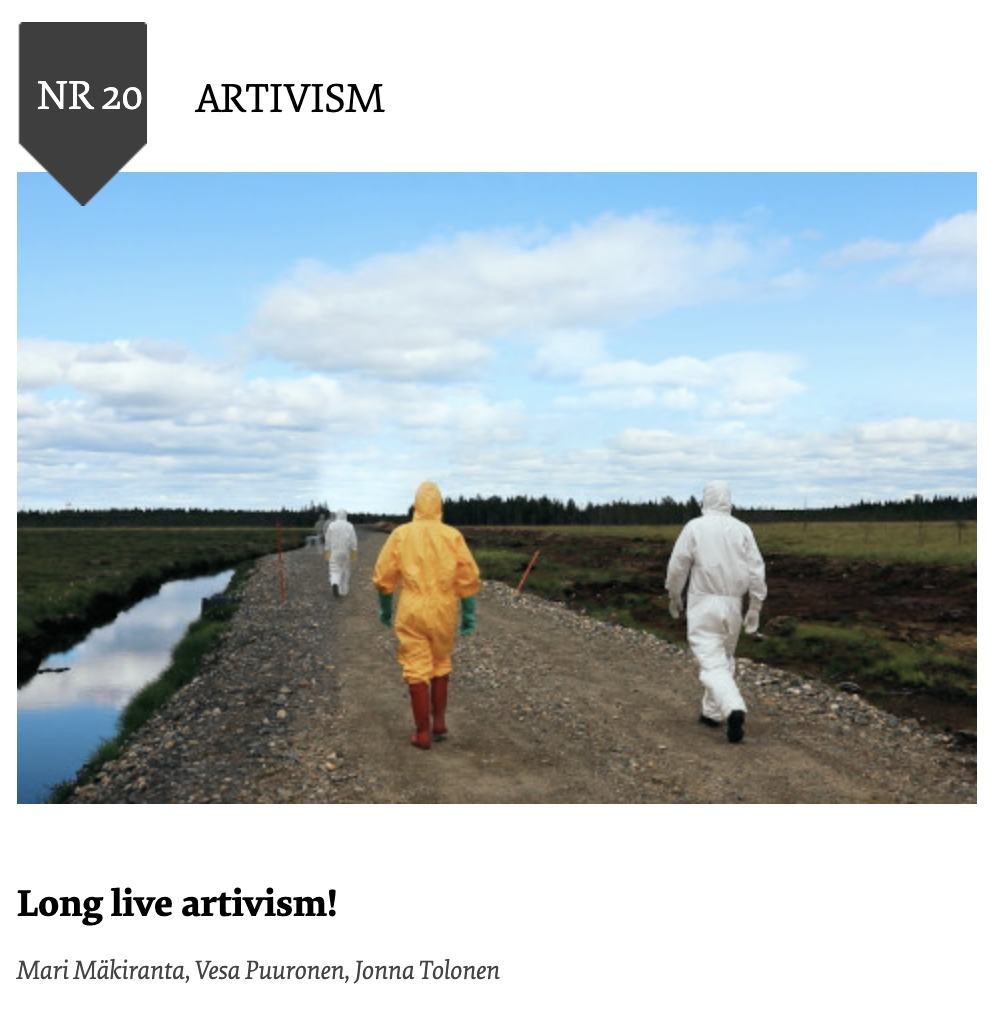
Our Artivism issue is inspired by dismantling the contemporary conception of art and by a space where working methods, contents, and ideals produced by art have changed. This also enables negotiations and struggles between various conceptions of art. The art-historical contexts of activist art are rooted in 20th century avant-garde, German expressionism, and feminist art and in the anti-war and anti-racist civil rights movements of the 1960s. In the history of science, activism has been an essential part of European intellectuals’ self-understanding and operating culture. Today, as conceptions of art have changed, conceptions of science are also in flux. Small movements towards science activism, a new kind of integration of theory and practice, are emerging in Finland. Scientific and artistic practices have come closer to each other, recently influenced by material threats to humanity’s future: biodiversity loss and climate change. These threats are forcing us to give up on the 18th-century belief in progress and the anthropocentric worldview based on controlling nature.
Politically transformative and critical art plays a central role in fights for environmental protection, gender diversity, and antiracism. Activist art, being often radical, searching for something new, and integrating people and environments, is tied to power–knowledge relations. In this issue, we approach artivism as performative art related to questions of power, matter, and representation as well as their relations. We focus on the fact that art, in its various creative forms, includes political objectives. At the same time, we explore the ways political action can be creative. Artivism, based on the interests of a researcher, artist, activist, and various communities, may be connected with personal and political objectives related to subjugation, resistance, and empowerment. Activism as a form of artistic practice may also be quiet, tentative, experimental, and searching. Sometimes, it leads to social changes. At other times, it appears as slow, nearly invisible movements and powers.
Artivism overlaps with the world’s material dimensions and materialistic contradictions. It is a pursuit of change, movement, and a non-essentialising way of approaching the world and society. We invite our readers and experiencers to join us in this ongoing movement!
We thank all the artist-researcher and the peer-reviewers for their invaluable contribution to this issue.